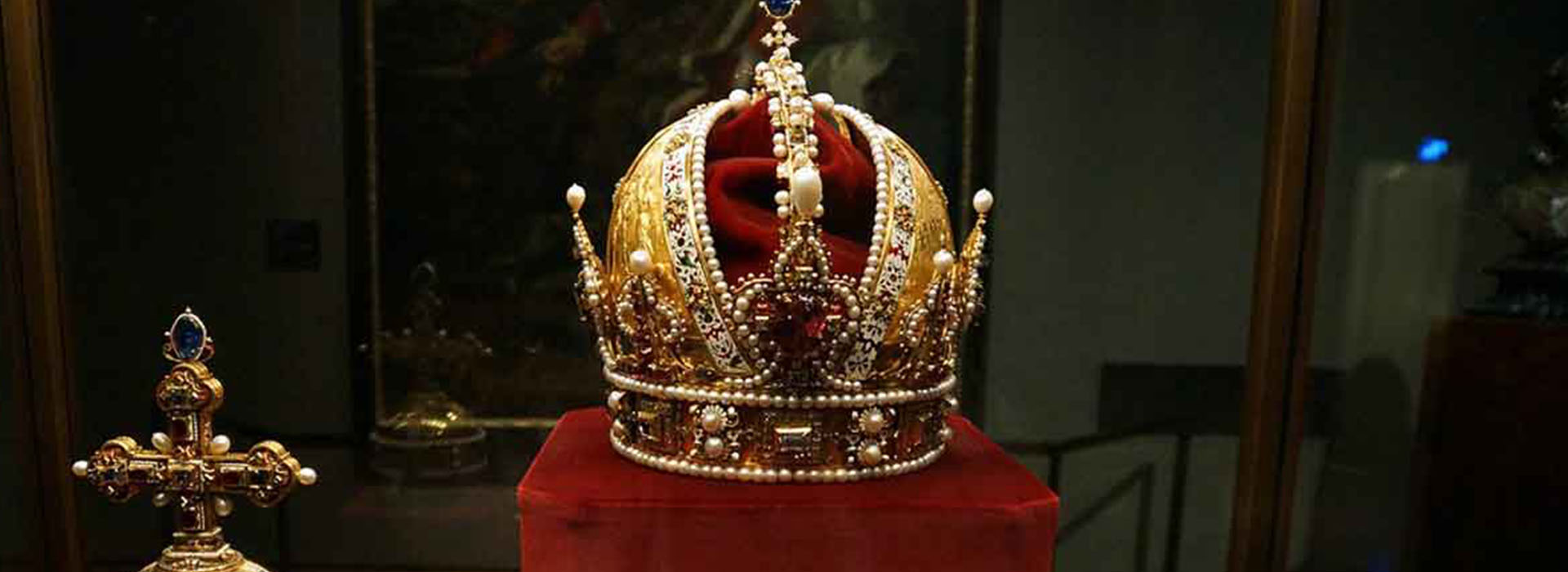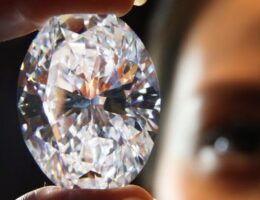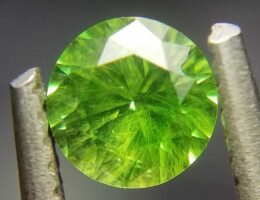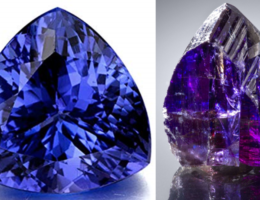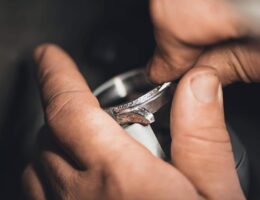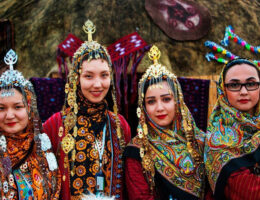IRAN ART EXHIBITION: IRAN AS A COUNTRY WITH RICH CULTURE AND HISTORY IN JEWELRY MAKING
Compared with the Mesopotamia and the Nile banks where water was easily accessible and farming faced no difficulty, Iranian plateau inhabitants gained sufficient wealth and chance some centuries later to metal and made ornamentation out of them.
Therefore, gold works and jewelry in Iran is ancient but younger than what happened in the Mesopotamia.
Gold Works and Jewelry in Iran during Pre-Islam Iran
The 2nd Millennium B.C
The inhabitants of the Iranian plateau created copper ornamentation and strings of colorful beads in 3000 to 1300 B.C. Silverworks started to be made in 2000 B.C.
During the first half of the 2nd millennium B.C, jewelry was made in Susa in form of bracelets and necklaces with melon shaped beads and hollow gold spacers. Both men and women wore them.
During the same period, at the north and northwest of Iran, artists were using the same kinds of techniques and designs in jewelry. Simultaneously, the inhabitants of Shahr-e-Sookhteh, the ancient city in Sistan & Baluchestan province, jewelry was made by local craftsmen.
The 1st Millennium B.C
A combination of several previously inhabited ethnic groups and newcomers from overthrown dynasties in Mesopotamia on one hand and Aryan nation from the north on the other hand formed an enriched variety of traditions in the 1st millennium.
These artistic traditions were discovered in some archaeological excavations. For example, at a grave in Azerbaijan province datable to 1000 to 800 B.C, a girl’s bones were found ornamented by bronze discs, headband, bracelets, rings, anklets and seven strings of beads.
During the 1st millennium B.C, in Luristan province, a group of bronze workers were living who made decorative and ritual ornaments, pins, standards, surmounted by demonic figures and ritualized animal motif-like totems as well as daggers, swords, bowls and harness gear. Metal sheets were also hammered to shape the designs of fabulous monsters on discs and quivers.
Achaemenians
The Achaemenians’ gold work and jewelry art was the result of harmonizing various artistic traditions in a very skillful way. Some of the stylized objects found belonging to this era include gold armlets, plaques, roundels, bracelets, rings, torques, buttons, beads, pendants, gems, etc.
Parthians
The Parthians’ jewelry was more decorative than majestic. Gold works and jewelry were made on smaller scales and more simple designs.
Sassanians
IRAN ART EXHIBITION: Like other arts, gold work and jewelry flourished under the Sassanian. What was astonishing in these arts could be explained as the intricacy of the seals, the quality of coins, the ornamentation encrusted on the crowns and the skill and style used in silverware.
Arabs’ Invasion
After the collapse of the Sassanian Empire, Iranian society could surprisingly keep its cultural identity despite of losing its political influence. As usual, invaders accepted Iranians’ culture and ceremonies. In other words, many of Iranian motifs and designs continued to be used and craftsmanship techniques survived.
In practice, silverware faced general acceptance, but with some reservations, gold was used just by women. Therefore, the artists of other religions, like Jews, mostly carried out the goldsmiths’ craft.
Gold Works and Jewelry in Iran during Post-Islam Iran
In the first two centuries of Post-Islam period, designs and motifs were limited within the classical, Byzantine and Sassanian ornamental traditions.
Between the 9th & 12th centuries, an Islamic style developed overwhelmingly, which was an abstraction of natural and geometric shapes. During the 12th and 13th centuries, Iranian bracelets were made of gold, silver and bronze, cast or made from sheet metal.
There were made gold earrings in the shape of crescent decorated with filigrees, granules, ribbons, scrolls or beads of different designs. Gold necklaces were composed of spherical gold beads interspersed with polished stones, granulated spacers or geometric motifs. Square or cylinder shaped amulet cases, gold, silver or bronze rings, precious stones inscribed and used as seals or divine protection, etc are among the products of gold workers or jewelers. The engraved patterns were varied conveying symbolic meanings either arabesques or animal forms.
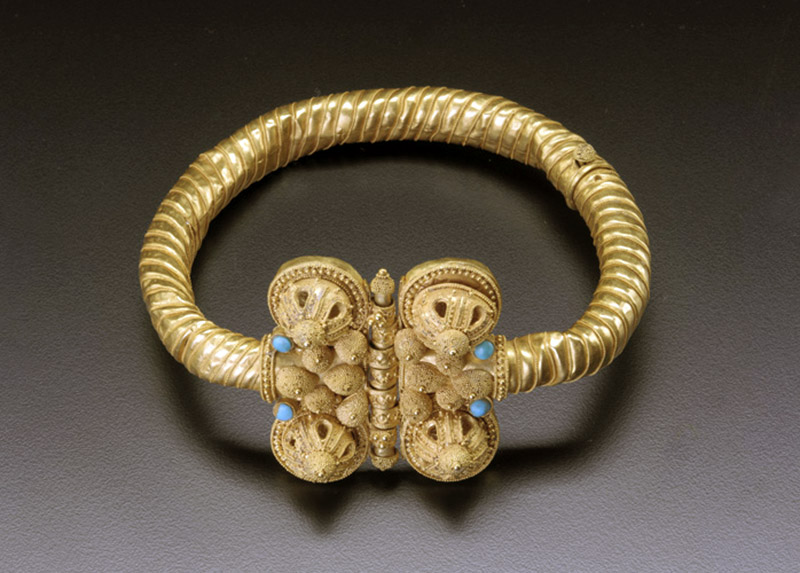
Timurids
Timur was a notable patron of the arts. He had a pretentious taste for a wealth of colorful precious stones encrusted on metalwork. Of course, this feature survived in Safavid and Qajar designs as well.
Safavids
Safavid period’s miniatures are valuable sources of information concerning the era’s jewelry making and tastes of the court. Both men and women followed certain fashions for ornamentations. Most Iranians were interested in precious gems for decorating their clothes or encrusting festal cups, ewers, flasks, dishes and pitchers.
Qajars
Qajar jewels were influenced by western designs and motifs. One of the characteristics of jewelry under Qajars was the number of gold pieces brightly enameled on one side and set with colorful stones on the other side. Later Qajar and 20th century jewelry became imitative and repetitive. Foreign models were almost copied in a way that little Iranian character could be traced on them. Westernization bad already started in the society as well as fashion, designs and motifs.
Tribal Traditions
IRAN ART EXHIBITION: But there is a different category of jewelry in Iran worn by tribes, the people who have preserved a vigorous angular style with great strength of expression in a wide range of silver objects. They are rich and varied in design, robust and pretty in form keeping ancient designs live.
There can be seen tribal women of various tastes and social status wearing crescent-shaped earrings, collars, bracelets, necklaces, medallions, plaques, armlets, brooches, leaf, fish, pear shaped/heart-shaped discs dangling from chains, small prayer cylinders, hair clasps and pins and other tiny decorative pieces.
Also Kurdistan’s jewelry was varied in motifs and shapes. Some symbolic motifs were used in them, stones were not so popular and small coins and beads were very much well liked.
The noticeable point about tribal jewels is the fact that they have long kept their distinctive identity compared to city tastes, just like many other particular features of the tribes’ people.
